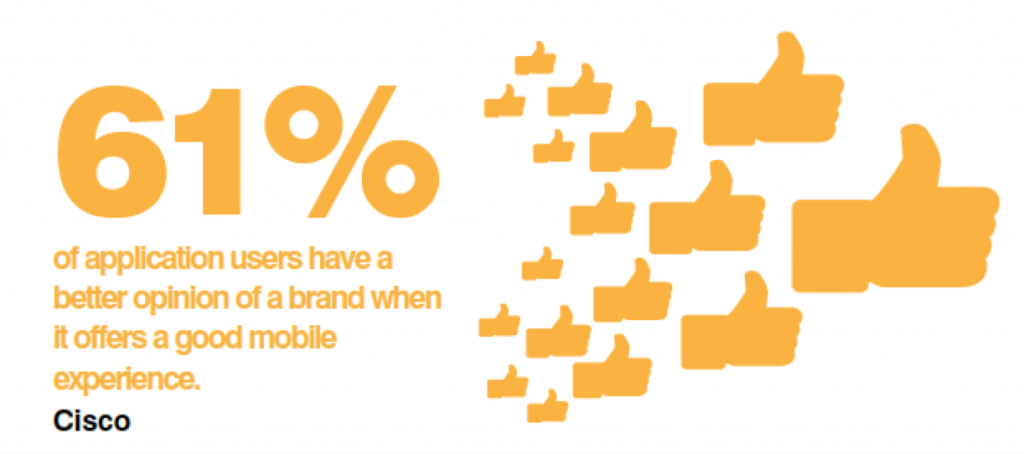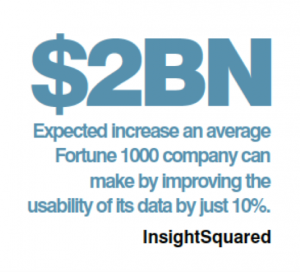The Status Quo.
The growth of today’s mobile environment has not only evolved but is increasing at lightning speed.
Over the past years, various marketers around the world have digitalized their marketing strategy and operations. As technology develops, the importance of shifting campaigns and learning new marketing methods becomes a top priority. Keeping up with the technological abilities of customers is important to user retention, recruitment and satisfaction. Though enterprises are adapting quickly to the changing market scope, the speed of advancement still strains the ability to adapt quickly.
Conservative enterprises struggle with the newborn consumer base, mobile-only patrons. Many modern day enterprises neglect to channel their treasure chests. Most companies already have repositories of data containing everything from CRM to back-end systems. Combined with analytics and intelligence, these repositories of data can quickly become the most powerful and impactful tool the enterprise has seen so far.

User Recruitment.
Before the explosion of mobile apps, the goal of most enterprises was to simply have a mobile presence. Downloads meant profit. Times have changed. Nowadays, downloads aren’t enough. Statistically, over three-fourths of all apps downloaded from the Google Play Store and Apple App Store are deleted. In many cases, the apps weren’t even used once. The number of active users is even lower as many inactive customers keep the app installed.
The diminishing number of users, misrepresentation and inability to gauge users is a problem that plagues all marketers.
A growing issue of mobile apps is the lack of retention. Studies show that enterprises and developers aren’t having any problems engaging new users. Despite the growing cost of engagement, its numbers are still at an all-time high, while retention rates are dropping tremendously. It is the job of marketers to increase and maintain brand loyalty. A proven way to increase the status quo is to concentrate on retaining existing audiences. Forget about attracting new customers, the solution is to make sure that customers you already have are satisfied.
Different times call for different approaches. Enterprises must use the advantage they have over start-ups, which is their access to large amounts of data and their capital. This is the most suitable and effective way for large enterprises to find out what and how customers are thinking. Discovering the consumer’s mindset, tendencies and needs are crucial to the success of a company’s mobile marketing strategy. Successful analytics and excitation will keep your enterprise one step ahead of the competition.
Digging Deeper.
Traditionally, marketers use basic analytics, otherwise known as vanity analytics, to gauge the successfulness of their mobile market share. Using only vanity analytics brings an unsolvable flaw. This type of analytics only gives the most basic and shallow statistics, like number of users and device type. There isn’t enough information available to make critical business decisions. Vanity analytics are only enough to gauge the initial attractiveness of the mobile app. As the app matures, more advanced measurements must be collected.
The issue of ROI comes into play. Nearly all enterprises pool most of their marketing money into attracting new customers, while existing customers are forgotten. This is not the right approach. Existing users are just as important, if not more important, than new users. As the costs of additional loyal users increases, the importance also grows. In the long run, the 2.25 (average cost of creating loyal user) is minute in the bigger picture.
New analytics need to factor in both existing vanity analytics and customer mindset. This is where the power of an enterprise comes into play.

By utilizing highly relevant CRM data, enterprises are in a unique position to rely on advanced engagement analytics. Showing the full picture of true user app interaction and allowing marketers to turn that insight into actionable points, should do the trick to not only attract new users but also to build and maintain a long lasting relationship between the company and its customers.
Measuring the right things.
Advanced analytics can be divided into three different categories:
Custom Mobile App Analytics.
Custom analytics is unique to each individual app. As different apps have specific functionalities, it is important to know if users are engaged with the app and its features the way you desired it to be. Custom analytics gives you a deeper look into how the user behaves, when and where they are choosing to log in, and what functions of the app are most utilized.

With most of Mobile Marketing Automation platforms, these custom analytics can be integrated with your CRM to deliver the types of data most relevant to your marketing plan.

Measuring User Experience.
User Experience analytics gives feedback into the quality of interactions between individual users and your app. This includes tracking indicators like performance of the app or errors. Not only that, it is also crucial to understand how users are responding to your push notifications and campaigns. Understanding the experience from a consumer’s perspective is invaluable for knowing where changes should be made.
Loyalty Analytics.
Loyalty analytics give you insight into the results of your overall marketing efforts. This module looks at everything from app reviews to referrals, such as social media endorsement and interactions, even customer’s use of rewards and promotions. These analytics showcase the things that most resonates with your users, and provides action points on how to engage them across different channels.

Analytics in action.
Analytics drives smart engagement. Elevating consumer interaction requires good understanding of the data analytics.
Mobile users are becoming more technically proficient and savvier than before. They hunger for appealing and useful information, with little tolerance for distractions. The key is to engage customers in a timely and personalized manner.
The three approaches:
There are three general approaches to engaging your users. Enterprises with data-rich CRM are poised to make the most of each approach.
Push notifications:
Marketers must think beyond the initial campaign of push notifications. Today’s campaign must be highly relevant to a user’s location, interests and recent activities. It is most effective in engaging a distracted or dormant customer.
In-app campaigns:
This type of campaign targets users engaged in the app. It should be highly contextualized to offer greater value and information for the user. In-app campaigns offer significant value to the customers beyond downloads. It shows them ways to interact with the brand in addition to what they might discover on their own.
Trigger-based campaigns:
Real-time marketing is an effective and powerful way to reach out to users. As evident by the name, trigger-based campaigns allow marketers to reach out to users based on triggers, which can be activated by certain user behavior, entering a new location, or by user preference. This can be done both in and out of the app and is triggered based on parameters set by you.
Some of the more common trigger-based campaigns are rewarding active users or welcoming a new customer.
The five levels.

The three different approaches described above can be executed on five different levels. Each level serves its own purpose and when combined with specific approaches to engagement, can be a powerful tool in user retention and capturing attention.
The five levels range from broadcasting to all your users to user-specific content.
First level
Broadcasted: Message with a broad reach. Mostly used for reaching every user for an equal purpose, such as an app update. While a broadcast message is useful, they should be used sparingly.
Second level
Segmented: These messages can be sent with a more narrowed approach, segmenting users into types of devices or broad location parameters.
Third level
Relevance: Marketers can achieve even more specific segments through content relevance, by reaching out to users based on buying habits or other patterns. It is a great way to reach otherwise dormant customers.
Fourth level
Contextual: This level allows you to narrow the focus of a customer’s engagement through more sophisticated methods like geo-fencing. Users see real value in direct messages that are relevant to their location or experience.
Fifth level
One-to-one: The pinnacle of mobile customer interaction, a hyper-personalized message that tells users exactly what they need, when they need it. This level of interaction results in lifelong loyal customers that keep coming back for more.
Total engagement
Enterprise marketers must be ready to engage users even after the initial download. Every interaction has the potential to strengthen or damage the brand to consumer relationship. Every campaign counts.
Moving beyond superficial data, marketers must turn to sophisticated analytics to gain deeper insights and turn it into user engagement, resulting in optimizing the positioning of their brand for success in the mobile-first market.
